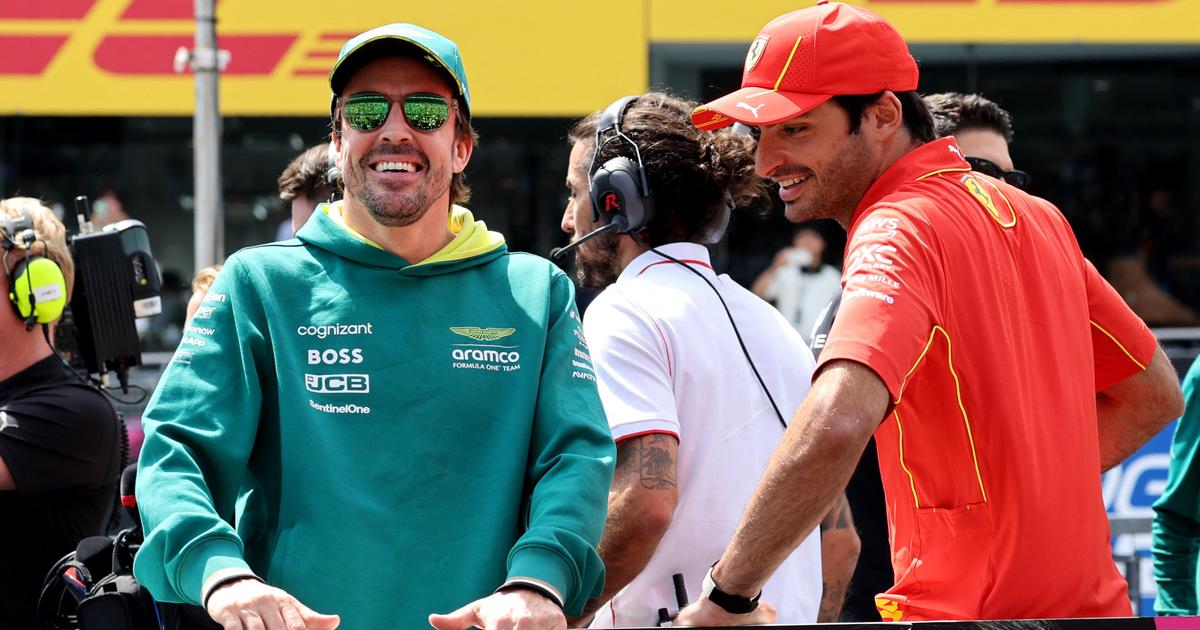In the first light of day and in full riot gear, 49 Spanish marines waded onto the beach on the small Philippines island of Mactan on April 27, 1521.
The command was led by the famous Portuguese Captain General Fernando Magellan.
Despite the early hour, 1,500 armed warriors were waiting for him and his men on the bank.
The attack ended in disaster.
He had already started with fatal misjudgments: out at sea there was indeed a flotilla of 30 war canoes, manned by around 1,000 warriors from the Cebu rajah.
But the Portuguese in Spain's service did not want this support, but wanted to demonstrate to his allies European superiority.
Enlarge image
Explorer Magellan: Only apparently invulnerable
Photo:
Leemage / imago images
It was based on weapons technology, but it was never used.
The tide was ebb and the coral reefs off the beach had partly dried up.
The three Spanish landing craft, manned by a further eleven soldiers, had to remain far out in front of the low water line.
That put the beach out of range of their falconettes, the guns on board.
The Spaniards were forced to work their way 700 paces through water and over the most difficult terrain in full gear.
One of them was the Venetian knight Antonio Pigafetta, whose travelogue about the first circumnavigation of the earth was to become world famous.
Pigafetta suffered only one wound in the face in the following battle, the grazing shot of an arrow.
He survived, Magellan did not.
The hubris of the world rulers
At the time of his death, the Portuguese and his personal slave Enrique were the only people who had circled the earth in person - not in one attempt, but successively.
Your current, epic trip was of course economically motivated: The Europeans wanted to reach the legendary Spice Islands of the Moluccas, the only place at that time where clove and nutmeg trees grew.
Such spices as pepper, cinnamon, turmeric and ginger were of the highest value in the economy of the late Middle Ages.
If Magellan's expedition succeeded in eliminating the middlemen of the Indians, Arabs and Venetians, she and the Spanish crown could become immeasurably rich with the sale of the spices in Europe.
Officially, Magellan's goals were sanctified by a supposedly noble purpose: Portugal and Spain had divided the earth among themselves in a treaty with the Pope.
The advanced noble goal of all discoveries and conquests was now the conversion and redemption of the "Gentiles".
And as such were all peoples of all skin colors beyond Gibraltar.
Magellan had signed a treaty with the Spanish king and emperor Charles V, which obliged him to conclude agreements with the regional princes on his journey, which included submission to the crown and church.
Magellan's last stop before his death was the promising island of Cebu, the regional trading center in this part of the Philippines.
It went well: Huambon, the rajah there, kissed the cross and swore an alliance with Spain.
Trust in superior weapons
The mood on Cebu was accordingly happy, Magellan's new "brother", the rajah Huambon, had only one small problem: he complained that a petty prince from the neighboring island of Mactan did not want to pay him tribute at all.
If it was nothing more!
Magellan made a promise to his new ally and newly converted Christian brother that he would get the matter out of the way at once.
What followed were striking mistakes in the art of warfare and leadership that one would not expect from an experienced soldier like Magellan.
But as early as 1505 he had the experience that European soldiers with good weapons could be far superior to indigenous warriors: Even as a soldier in Portugal's service, he was part of a small troop that had overcome supposedly overpowering Indian and Arab armies, well armed with numerous cannons.
Not an isolated case: cause of death overconfidence
Within a few years Portugal had fought for maritime domination in the Indian Ocean and controlled numerous cities and ports on India's coasts.
Perhaps it was this experience that coupled with the conceit of the Portuguese and Spanish aristocracy to a feeling of choice and invulnerability, to arrogance and utter delusion.
No matter how superior the Spanish weapons were, a punitive expedition remained a dangerous undertaking.
It was contrary to all instructions and customs of the Spanish Navy for a captain to personally lead such an action.
Everyone in the fleet knew the fate of João Dias de Solis, like Magellan a Portuguese in Spain's service.
It was only five years since this captain lost his life in South America in 1516.
De Solis had set out on an expedition in what is now the border area between Argentina and Uruguay with only two officers and seven soldiers to explore the Rio de la Plata that had just been discovered.
The Europeans got a few kilometers - only a cabin boy survived the attack by indigenous warriors.
Rumors of cannibalism
The rumor soon circulated in the Spanish fleet that de Solis and his men had been cut up, cooked and eaten: unlikely because the local charrúa did not practice cannibalism, but not entirely impossible if the expedition members were victims of warriors of the Guaraní people should.
However, they settled much further inland and upstream.
Either way, the story of de Soli's inglorious end had spread rapidly in Spain's fleet - as a cautionary example.
Fernando Magellan did not act on April 27, 1521 as if he were interested in admonishing stories.
He, too, led his men to ruin against an overpowering opponent.
The adversaries acted cleverly.
Cilapu Lapu had divided his force: two groups attacked the Spaniards from the sides, the third came head-on.
For half an hour, the Spanish marines fired muskets and crossbows at the islanders without causing much damage.
Although the bullets and arrows pierced the enemy's shields, the wounds they left were minor.
And the landing craft's falconettes could not be used.
The eyewitness Pigafetta reported: “Magellan now ordered the village to be set on fire.
But the sight of the flames made the islanders even wilder and more bloodthirsty. "
display
Title: The first trip around the world - On board with Magellan.
Historical travel report.
The first complete German edition including original illustrations.
... and commented by Christian Jostmann
Publisher: wbg Edition
Number of pages: 272
Author: Antonio Pigafetta
Buy for € 29.00
Price query time
04/27/2021 10:59 a.m.
No guarantee
Order from Amazon
Order from Thalia
Order from Weltbild
Product reviews are purely editorial and independent.
Via the so-called affiliate links above, we usually receive a commission from the dealer when making a purchase.
More information here
Soon the Spaniards withdrew towards the reef and boats.
The first movement quickly turned into a disorderly escape.
Magellan took responsibility, he covered his people and held the position on the beach with a few loyal followers.
Pigafetta described in detail what happened next:
“An islander managed to wound Magellan's face with a lance. The captain general pierced his opponent on the spot with his own lance, which now got stuck in the body of the dead man. He wanted to draw his sword, but was only able to get it half out of its scabbard. The also wounded right arm hardly obeyed him anymore. When the islanders saw this, they attacked him in a crowd. Magellan received a lance stab in the left thigh and fell on the face. At the same moment all the enemies threw themselves at him and struck him with their weapons. So died our faithful guide, our light, our support. "
The islanders of Mactan did not hand over the body.
And so the man who on his trip around the world named more places than anyone before is buried in an unknown, nameless place - an irony of history.
Magellan's origin is similarly unclear.
The place and date of his birth are only roughly known: In his youth he lived in Nobrega in northwestern Portugal.
When he arrived in Spain, he registered as a citizen of Porto.
Whether Magellan was also born there remains to be seen, as well as the date, sometime between 1470 and 1480. When he died, the captain general was in his forties.
Only 18 of the 242 sailors returned
And he would probably have been forgotten had it not been for the writing witness Pigafetta.
His report was discovered in an archive at the end of the 18th century and published as a book for the first time in 1800.
Only now was Magellan recognized as a pioneer and "hero of scientific exploration of the world," according to Alexander von Humboldt.
How much Fernando Magellan really contributed to the discovery of the world is controversial today.
But there is no question that he was a brilliant sailor, navigator and explorer - even if his circumnavigation then had to be brought to an end by Juan Sebastián Elcano.
Elcano drove back to the Spanish home port on September 6, 1522 with Magellan's ship "Victoria".
He brought home 18 of the originally 242 sailors who had set out two years, eleven months and two weeks earlier.
Enlarge image
The whole circumnavigation: Magellan himself managed to cross the Atlantic and Pacific, he saw Europe, Africa, America and Southeast Asia.
The last trip across the Indian Ocean to the Cape of Good Hope and back to Spain was completed by his deputy.
But Magellan had already explored this path before: All in all, he became the first circumnavigator.
Photo: imago stock & people / imago images / United Archives International
The big trip not only cost lives: the bottom line was that it was a losing proposition for Spain's king.
And it probably contributed to the realization that such expeditions to the countries of origin of the precious spices were still no business for the Europeans of that time.
So Magellan's journey remained unique for a long time.
It was not until 50 years later that the Englishman Francis Drake was to go around the world in second place, largely on the paths discovered by Magellan. Although he lost three ships, his expedition turned into a sensational gain, for an obvious reason: whatever gold and silver Drake brought back to England he had stolen from the Spaniards on the way as a freeing pirate.








